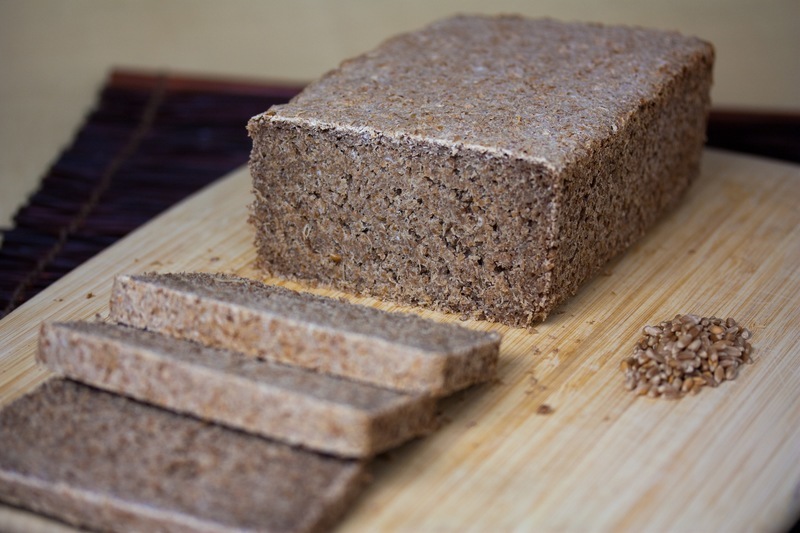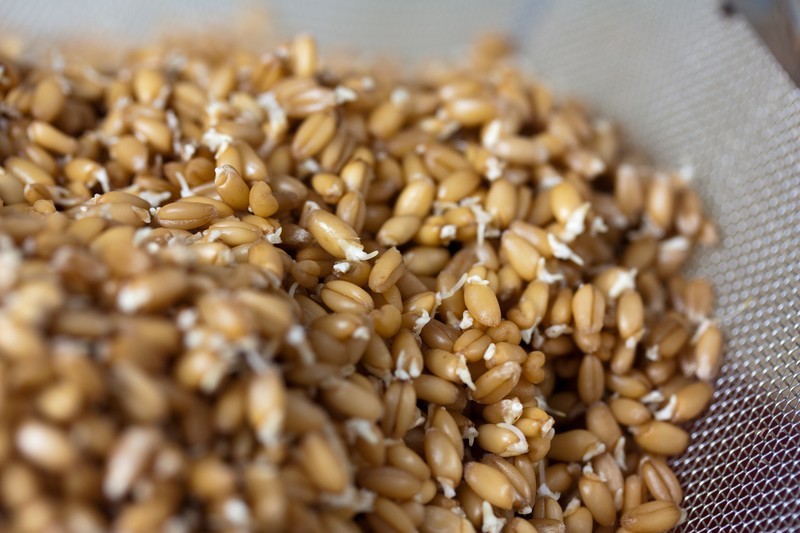Veganbaking.net
Vegan Baking Recipes
Vegan Bread Recipes
Vegan Hearth Bread Recipes
Sprouted Wild Yeasted Whole Wheat Bread
Sprouted Wild Yeasted Whole Wheat Bread
1

This Sprouted Wild Yeasted Whole Wheat Bread recipe is a nod to how the first breads probably got their start. Wheat berries were probably softened with water, ground and left out in the elements where they were then populated by airborne yeasts and bacteria, causing the dough to rise slightly. Placing this dough on hot rocks in or near a fire probably resulted in a fine vegan treat like nothing else available at the time.
The magic of flourless, sprouted wild yeast breads
Similar to Flourless Sprouted Wheat Bread and Wild Yeasted Wheat Bread, this bread is a great example of how amazing breads can be when you allow nature to do most of the work. This is not your grandmother's bread; since it utilizes sprouted, ground wheat berries that are then wild yeasted, the result is an extremely dense, hearty and flavorful loaf. Since the sprouting of the wheat berries and the wild yeasting of the dough provides so much complex flavor, there's no need to enrich the dough with sweeteners and excess salt. A little salt is added as a flavor enhancer. This bread is very similar to Manna Bread which I reviewed here. Due to it consisting of wild yeasted wheat berry purée, it doesn't rise considerably and is extremely dense. It takes several days to make but if you enjoy hearty, crusty, dense breads such as pumpernickel then it will be well worth it. Once you've mastered this bread feel free to make several loaves at a time, slice it then freeze it for maximum convenience.Find more Wild-yeasted recipes on Veganbaking.net
Sprouted Wild Yeasted Whole Wheat Bread Recipe
3 ½ cups wheat berries (hard red winter wheat preferred)1 ¼ teaspoon salt
6 Tablespoons water
1) Sprout the wheat berries
Soak the wheat berries for about 18 hours. Drain then sprout the wheat berries, rinsing 2 to 3 times per day until the sprout is barely visible. This should take about 24 to 36 hours. If the berries sprout and you don't have time to proceed to step 2, place them in the refrigerator to slow their sprouting rate down. Here's more information on sprouting grains.
2) Process the wheat berries
Pat the berries with a paper towel to remove as much moisture as possible. Divide the sprouted wheat berries roughly in half into two separate batches and process them in a food processor until they form a ball and break apart. This should take a few minutes per batch.






